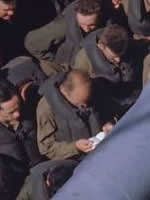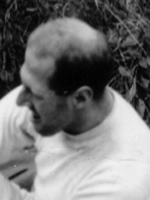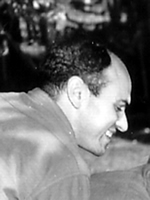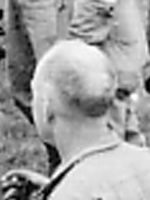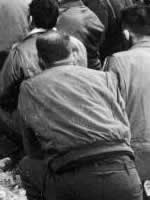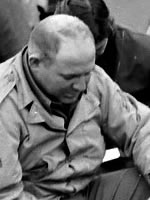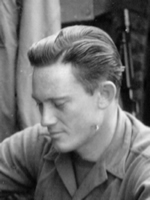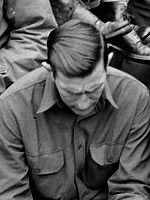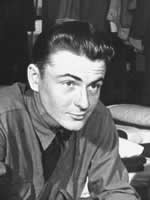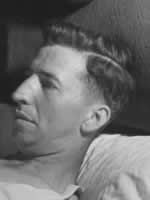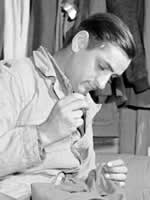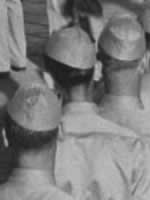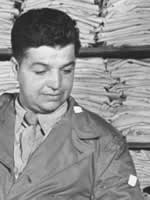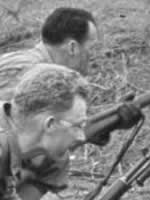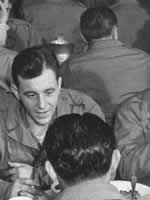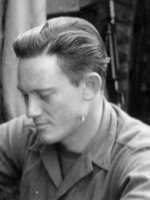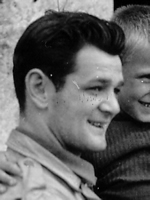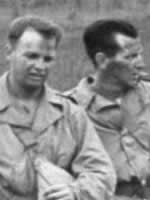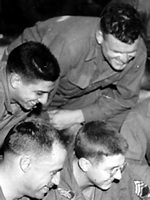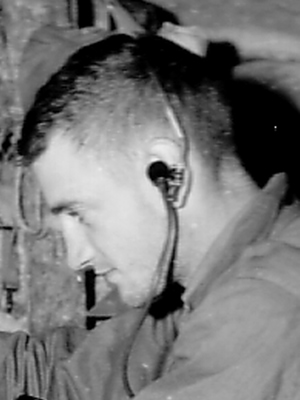GI Hairstyles: Original Images, Observations and Recommendations
Date Written: Winter 2010
Author: Chris Guska - 90th IDPG
Research Assistance: Charles McFarlane - 90th IDPG
Overview:
If you've read any of my other articles - you know I love numbers and ratios to support or refute the hypotheses. I'd love to take a uniform approach across photo study articles in presenting ratios and percentages to support conclusions, but in this case I feel it is inappropriate.
Guns and gear are standardized - haircuts and people aren't. Its one thing to say that 63% of M1 Carbines for X campaign and Y unit should be in Z configuration. Its ludicrous to say that 27% of Soldiers in J location at K time should have L haircut.
That being said - I do feel that it is quite legitimate to discuss some overall trends exhibited in the photos in the absence of any percentages or ratios.
An additional note: While it seems laughable to mention this - the US Army of 1941-1945 was not entirely comprised of 18-24 year olds. The Army was not entirely front line infantrymen either. That being said - there are a good number of photographs of men in their 30's through late 50's that are a good reference for age appropriate styles.
Observations:
As you go through the photo collection you'll undoubtedly come across some of the gem's that I came across.
Baldies
I'll start out with the real obvious ones just so we get it out of the way. There were balding guys, guys with receding hairlines as well as guys who utilized the comb over during WW2. Guys who are balding, feel secure in your shiny head - in that you aren't a farb.
Despite being in my mid 20's as I write this article - I'm living with a quickly receding hairline that I'm sure was also experienced by other men.
Guys with balding heads or receding hairlines weren't immediately designated as 4-F or relegated to stateside service.
Stereotypes / Hollywood Style
We've all seen the recommendations in the past on how a "WW2 Korrekt! HairKut" should look like - and more often than not, they've had the hollywood photos of Clark Gable or other greasy looking celebs.
The basics of this one are LONG on top, enough to comb or slick in some direction - with shorter sides that are still long enough to comb to match the overall style.
These guys existed outside of Hollywood - and it certainly is a "period correct" hair style - but its important to call out that not EVERYBODY wore their hair this way - especially during their time in the Army.
As far as photos of this hairstyle in the field - it appears to be a REMF thing.
While it seems obvious, guys in the rear had a bit more freedom to take care of personal grooming than those hard chargers up front dealing with those pesky natsees all the time. Also - personal grooming standards appear to be quite different stateside than they were in theater with regards to length of hair maintained. As the shit started to fly, hair started to get much shorter...
Induction & Training
So there's this myth out there that when guys got inducted into the Army and reception at basic training - they had their heads shaved.
While I haven't absolutely confirmed that this was not the case - I couldn't readily find any photos to prove it.
What I did find were significant quantities of photos of new recruits, in uniform, at reception centers and in basic training with well groomed crops of hair. What was striking was how long their hair was on top - long enough to maintain the styles of the period. Based on those photos, I conclude that heads were not shaved clean upon entrance to basic training - nor was there a "high and tight" haircut given.
It was only when I began to search for postwar, 1950's Army and particularly USMC basic training photos did I find the practice of shaved heads and very short hairstyles evident.
Trends:
The photos encompass men from their teens well through the 50's from 1941 through the occupation in 1945. Balding heads with comb-over's or widows-peaks are quite visible through the time span. While not necessarily "hair styles", they are somewhat timeless in their presentation and appearance.
There are two other groups that can be drawn from the remainder:
1.) Hair long enough to apply "product" to and comb
2.) Shorter "styles" that don't have an apparent directionThe first group can be summed up by long on top, usually 3 inches + in length, with some kind of hair tonic or "product" being used - parted, combed to a side, combed back, or some other means of styling the hair.
The sides and back are relatively short - more or less finger length, tapered, with the neck either blocked or rounded. There is no apparent pattern on the neck style. What is of note is that on the sides, there are some guys with nice tapers from top to bottom, while others have a distinct line where the hair goes from long to quite short or clipper cut. Today this is generally regarded as the sign of a bad haircut....
The second group appears to simply follow the natural lay of the hair - with no hair tonic or "product" applied. The hair looks to be combed or brushed when dry, allowing the hair to lay naturally.
Simply put, some guys can pull off one of these long combed hairstyles,others cant. Whether its because you've got curly hair - or your hairline is rapidly retreating (like the author) there are "non styled" alternatives that are totally authentic.
In my opinion, there is no DIFINITIVE "Army Haircut" whether it is stateside, or in theater. If somebody tells you that the only acceptable haircut is like Clark Gable's, or that only "High and Tight" is acceptable - tell them to go suck an egg.
and by the way....
HOOAH!
1.) Defining Terms and Styles
2.) Analysis and Conclusions (You are here)
3.) What to ask your barber
A.) The images
90th IDPG Original Research




